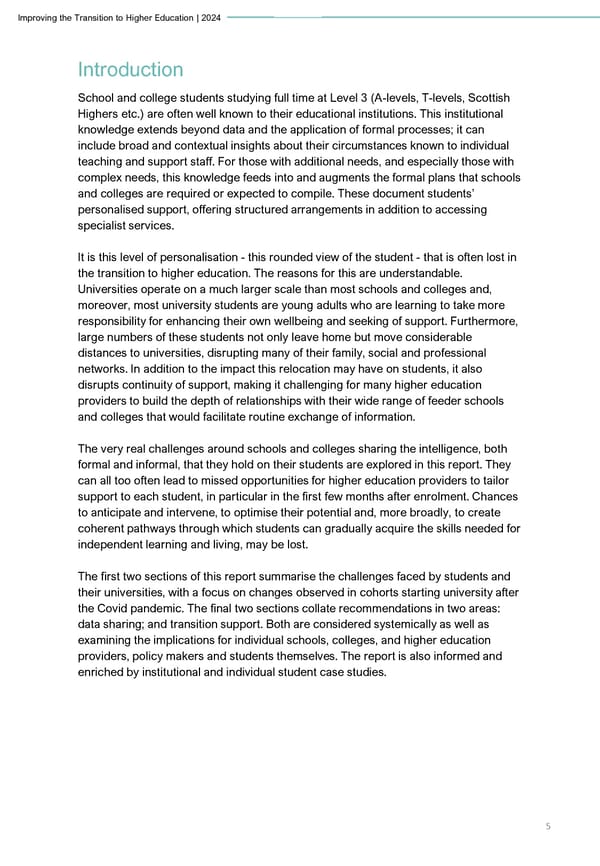Improving the Transition to Higher Education | 2024 Internal Introduction School and college students studying full time at Level 3 (A-levels, T-levels, Scottish Highers etc.) are often well known to their educational institutions. This institutional knowledge extends beyond data and the application of formal processes; it can include broad and contextual insights about their circumstances known to individual teaching and support staff. For those with additional needs, and especially those with complex needs, this knowledge feeds into and augments the formal plans that schools and colleges are required or expected to compile. These document students9 personalised support, offering structured arrangements in addition to accessing specialist services. It is this level of personalisation - this rounded view of the student - that is often lost in the transition to higher education. The reasons for this are understandable. Universities operate on a much larger scale than most schools and colleges and, moreover, most university students are young adults who are learning to take more responsibility for enhancing their own wellbeing and seeking of support. Furthermore, large numbers of these students not only leave home but move considerable distances to universities, disrupting many of their family, social and professional networks. In addition to the impact this relocation may have on students, it also disrupts continuity of support, making it challenging for many higher education providers to build the depth of relationships with their wide range of feeder schools and colleges that would facilitate routine exchange of information. The very real challenges around schools and colleges sharing the intelligence, both formal and informal, that they hold on their students are explored in this report. They can all too often lead to missed opportunities for higher education providers to tailor support to each student, in particular in the first few months after enrolment. Chances to anticipate and intervene, to optimise their potential and, more broadly, to create coherent pathways through which students can gradually acquire the skills needed for independent learning and living, may be lost. The first two sections of this report summarise the challenges faced by students and their universities, with a focus on changes observed in cohorts starting university after the Covid pandemic. The final two sections collate recommendations in two areas: data sharing; and transition support. Both are considered systemically as well as examining the implications for individual schools, colleges, and higher education providers, policy makers and students themselves. The report is also informed and enriched by institutional and individual student case studies. 5
 Improving the transition to Higher Education Page 4 Page 6
Improving the transition to Higher Education Page 4 Page 6